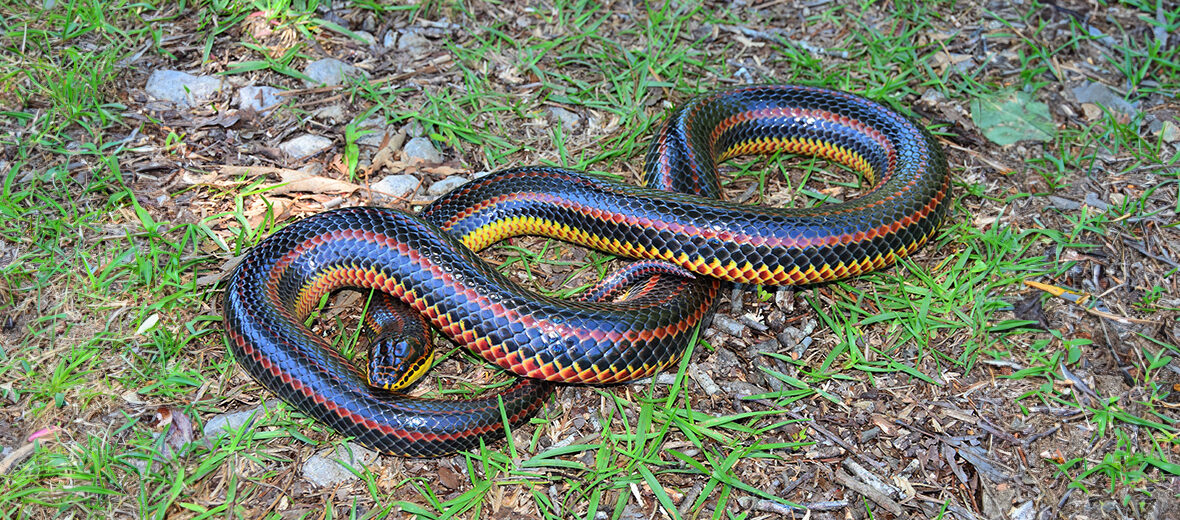
The beautiful rainbow snake, aka eel moccasin, hails from southeastern United States. These nonvenomous colubrids are arguably the most beautiful snake in North America. Even though they face the threats of habitat loss and destruction at the hands of wetland drainage, residential, and commercial developments; hunting; and trapping for the pet trade, these snakes are still abundant enough to be listed as Least Concern by the IUCN. Their population trend is stable.
First the Stats…
Scientific name: Farancia erytrogramma
Weight: Up to 3+ lbs.
Length: Up to 66 inches
Lifespan: Up to 19 years
Now on to the Facts!
1.) There is 1 living subspecies called the common rainbow snake. There was a 2nd subspecies, the Southern Florida rainbow snake, but that was declared extinct in 2011.
2.) The specific name erytrogramma hails from the Greek word erythros meaning “red”, and gramma meaning “letter or word”. It is believed that the author meant stripe or line.
3.) These snakes are not typically seen, due to being secretive and the fact that they spend most of their lives in the water, among aquatic vegetation.
4.) They also bury themselves in mud and are excellent swimmers.
5.) If captured they are very placid and seldom bite, if at all.
But wait, there’s more on the rainbow snake!
6.) In the spring time in Virginia, large numbers are unearthed by plows around the Chickahominy River area.
7.) Eels, fish, earthworms, small frogs, tadpoles, and salamanders make up their diet. With eels making up the bulk of their diet.
Did you know…?
There are other common names for these snakes such as red-lined snake, red-sided snake, red-lined horned snake, horn snake, sand hog, sand snake, and striped wampum.
8.) Females lay up to 50 eggs in July, but the typical number is 20.
9.) Eggs hatch in up to 80 days and are precocial (totally self sufficient).
10.) Their preferred habitats are marshes, cypress swamps, blackwater creeks, slow-moving streams, and sandy coastal plains.
Now a Short Rainbow Snake Video!
Be sure to share & comment below! Also, check out the Critter Science YouTube channel. Videos added regularly!
Want to suggest a critter for me to write about? Let me know here.
Some source material acquired from: Wikipedia & IUCN
Photo credit: Florida Museum



